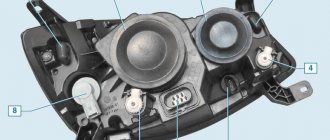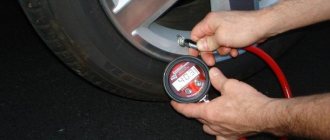avtoexperts.ru
It seems that many car enthusiasts have more than once looked with hidden envy at cars passing by and tinted to zero.
Of course, high-quality tinting changes the appearance of the car, making it visually attractive. However, in addition to a purely aesthetic role, car window tinting also performs useful functions. For example, it allows you to reduce the temperature in the car interior in the summer, without letting in a significant share of solar energy, and in the winter it helps to accumulate heat - after all, the sun's rays warm up a dark surface better. In addition, tinting performs a protective function, hiding from the eyes of ordinary people what is in the cabin and trunk (if it is a hatchback or station wagon) of the car. The only inconvenience that tinting can cause is a decrease in visibility at night. The windows of many modern cars can be tinted at the factory. The manufacturer often determines the comfortable degree of tint (the throughput of the tint film) in accordance with international safety standards. The traffic police has no complaints about such tinting. If the film used to tint car windows does not meet the specified standards, the traffic police may fine the car owner and force him to remove the tint. However, we are talking only about the glass of the front doors: according to GOST, the throughput of the tinting film for these windows should not exceed 30% (that is, the tinting should absorb no more than 30% of the light).
Let's say you decide to tint the windows of your car. But you don’t trust companies that do tinting and want to do everything yourself. Commendable. We will try to help you with some tips.
Tip #1. Film selection.
You are probably not your own enemy, and therefore you must approach the choice of film responsibly. First, remember that a good film, characterized by durability and optimal transmission capacity not only for sunlight, but also for the driver’s vision, is not cheap. However, is it worth saving the budget when it comes to high-quality car tinting? Secondly, it is worth deciding which glasses will be tinted. All car windows can be tinted, but the throughput of the films for the windshield, rear and side windows will be different. Let's say you wanted to tint all the windows of your car. Then a film with a transmission capacity of 50% is suitable for the windshield, for the front side windows - 35%, and the rear windows and trunk windows can be tinted with a film whose transmission capacity is 15%.
In addition to the degree of transparency of the film, its color must also be taken into account. The optimal choice is charcoal gray, which is comfortable for the eyes of car passengers and well prevents sunlight and prying eyes from entering the cabin.
Tip #2. Preparing for tinting film.
Now all that remains is to dismantle and clean the glass. We advise you to remove them, since covering car windows with tint film without removing them is a complex matter and you cannot do it without experience. It's better not to risk it and remove the glass. Then they should be thoroughly washed with soapy water, complex stains should be removed with a solvent, and then washed again with soapy water. The next stage is preparing the “pattern”. To do this, take a piece of tint film, apply it to the glass and mark the edge of the cut with a marker, leaving a tolerance of 5-7 millimeters. Then we cut this pattern with a stationery knife.
Tip #3. Covering car windows with tinting film.
The soap solution that we used to clean the glass from dirt will also be useful to us during the pasting process. It is important to remember that this procedure must be carried out in a clean room where there is no dust, otherwise microparticles may get under the film and damage its appearance. Apply a thin layer of soap solution to the surface to be glued using a spray bottle.
This is necessary so that the piece of film used to cover the glass can be freely moved over its surface during adjustment. Then wash your hands and wet your fingertips with soapy water. We take the tint film in one hand, and with the other we remove the protective film from its inner surface. Wet the released adhesive side with soapy water. Then, being careful, apply the film to a clean and damp surface, making sure that there are no horizontal folds. Vertical - allowed. Then we begin to carefully level the film using a plastic spatula, moving it from the center of the glass to the edges. In this case, the film must be heated with a hair dryer.
Difficult task? Very. Therefore, it is better to cover the surface of the glass with a tint film with an assistant who, for example, will warm up its surface while you smooth out the vertical folds.
It is very important to ensure that the film adheres as tightly as possible to the glass and does not allow bubbles to form. If this cannot be avoided and bubbles appear on the surface of the film, air or excess soap solution can be removed from them by piercing the bubble with the tip of a needle. The hole will be microscopic and will not affect the appearance or life of the tint film. When the film is applied, we leave the treated glass to dry for several hours and move on to another. Having completed all operations, being careful, we install the tinted windows in place - the work is ready.
Watch a useful video on car window tinting
Source
Preparatory stage
Before you start directly tinting the glass, you will need to select a suitable film. It’s worth noting right away that it is extremely undesirable to use the cheapest Chinese film, since its service life will not be very long. Over time, such material fades in the sun, and the adhesive layer leaves much to be desired. It is either too weak or, on the contrary, too sticky and its remains will be very difficult to remove if the tint is removed.
More expensive film from famous manufacturers has optimal thickness, does not lose color in the sun and can last for many years.
You should also not forget about the light transmittance of the film, because if you do not take this point into account, you can get serious problems when passing a technical inspection or a traffic police check. For example, rear windows can be tinted using any films, except those that have a mirror effect. If we talk about the front side windows, then they should be able to transmit at least 70 percent of the light, as for the windshield, then the figure should be at least 75 percent.
Car tinting should be done in a clean room with a good light source and normal humidity. It would also be useful to find an assistant in order to minimize all risks. Before starting the process, you should thoroughly wash the car, paying special attention to the windows. The surface must be smooth, free from dust, chips and deep scratches. If you plan to tint the door windows without removing them from the car, you will need to remove all the seals.
DIY car tinting
A popular type of car tuning is window tinting. Tinted windows allow less light and heat into the interior.
Where to begin
The side door glass is flat. It is better to start mastering tinting with them. The difficulty with tinting these windows is that they are movable. The film glued to the glass must fit under the seal. There is no way to do this without removing the seals. For the first attempt, it is better to completely remove the glass from the car.
The glass removed from the car must be thoroughly washed with water and isopropyl alcohol and wiped with lint-free wipes. Definitely on both sides. Pour distilled water and a little shampoo into a spray bottle. Literally a few drops per liter of water. Having placed the glass on a convenient support, we measure and cut a piece of film, with some margin. Now you need to remove the protective film from the tint film and moisten it generously with water and shampoo, lay the film with an adhesive layer on the glass. While the glue and glass are separated by a layer of water, the film can be moved, but this will last no more than 15 minutes.
The question may arise as to how to separate the films. Use two pieces of tape. And when cutting the film, leave margins that you will inevitably grab with your fingers and then cut off.
Having spread the film on the inside of the glass, use a rubber spatula to expel the air and water from under it. Applying film to glass removed from the car has the advantage that the film can be easily trimmed along the edge of the glass. We cut the film on the upper edge of the glass with an inclination to the plane of the glass, about thirty degrees. The remaining edges will be sealed.
The glass can be reinstalled on the car. But during the week you need to be careful, do not wash the car, do not roll down the windows. During this time, the residue will dry and the glue will harden.
In the rear door, in addition to the roll-down one, there is a small triangular fixed glass. There is no need to remove it from the car. Cut out the film for this glass with a small margin. Having smoothed the film in the middle of the glass, cut it along the edge of the seal. Back to back. Of course, it would be even better to bend the edge of the seal and tuck the film there, but I didn’t succeed. It was somehow sloppy.
Rear window
What types of films are there?
Armor film – strengthens the glass. You shouldn’t expect miracles, but in case of an accident, pieces of glass will not fly into the cabin, and in normal times it’s just an athermal film
A rather interesting solution is protective film for the body. This film is transparent and almost invisible, but protects the body from damage. The protective film is applied, as well as the tinting.
Source
Required Tools
In order to independently protect your car from sunlight, you will need the following tools and consumables:
- Tinting film. Naturally, without it it will be simply impossible to carry out this process. When purchasing, in addition to quality properties, you should pay attention to the width of the roll. It is advisable to take extra material in order to avoid various awkward situations when the width of the film after gluing does not correspond to the glass by several millimeters.
- Putty knife. An object used to directly smooth the film. The kit usually comes with plastic spatulas, but rubber ones will be more acceptable. Often, in addition to a spatula, tinters use ordinary windshield wiper blades, but this approach is more relevant for large and unbent glass.
- Stationery knife. It must be very sharp in order to avoid jams and tearing of the material. A blade can also be an excellent replacement, but it is not so convenient to operate.
- Construction hairdryer. If the car windows are curved in two planes, or, more simply put, they are convex, then heating the tinting material will be required to smooth out wrinkles and bubbles. This is where an industrial hair dryer with temperature control comes in handy.
- A number of supplies will be needed. Dry cotton rags, liquid soap or shampoo, water spray. It is worth noting that it is highly not recommended to use glass washing liquid as a detergent. For convenience, you can use graph paper, from which you can make preliminary templates for cutting out the film.
Stories from our readers
“Fucking basin. "
Hi all! My name is Mikhail, now I’ll tell you a story about how I managed to exchange my two-wheeler for a 2010 Camry. It all started with the fact that I began to be wildly irritated by the breakdowns of the two-wheeler, it seemed like nothing serious was broken, but damn it, there were so many little things that really started to irritate me. This is where the idea arose that it was time to change the car to a foreign car. The choice fell on the melting Camry of the tenth years.
Yes, I had matured morally, but financially I just couldn’t handle it. I’ll say right away that I am against loans and taking a car, especially not a new one, on credit is unreasonable. My salary is 24k a month, so collecting 600-700 thousand is almost impossible for me. I started looking for different ways to make money on the Internet. You can’t imagine how many scams there are, what I haven’t tried: sports betting, network marketing, and even the volcano casino, where I successfully lost about 10 thousand ((The only direction in which it seemed to me that I could make money was currency trading on the stock exchange, they call it Forex. But when I started delving into it, I realized that it was very difficult for me. I continued to dig further and came across binary options. The essence is the same as in Forex, but it’s much easier to understand. I started reading forums, studying trading strategies. I tried it on a demo account, then opened a real account. To be honest, I didn’t manage to start earning money right away, until I understood all the mechanics of options, I lost about 3,000 rubles, but as it turned out, it was a precious experience. Now I earn 5-7 thousand rubles a day. I managed to get the car buy after half a year, but in my opinion this is a good result, and it’s not about the car, my life has changed, I naturally quit my job, I have more free time for myself and my family. You’ll laugh, but I work directly on the phone)) If If you want to change your life like me, then here’s what I advise you to do right now: 1. Register on the site 2. Practice on a Demo account (it’s free). 3. As soon as you get something on the Demo account, top up your REAL ACCOUNT and go to REAL MONEY! I also advise you to download the application to your phone, it’s much more convenient to work from your phone. Download here.
Tinting
Peel off the protective film from the tint . During peeling, immediately spray with soapy water. It is better to find an assistant here. One will hold the transparent layer, and the second will carefully pull off and spray the dark one. also spray the glass from inside the car . The soap solution neutralizes the adhesive on the film for several tens of minutes .
Apply tint film to the glass and make adjustments.
As long as the glue on the tint is neutralized, you can move it freely on the glass. Using a scraper, we begin to remove the solution from under the film, moving from the center to the edges. Wipe off the squeezed-out solution with napkins. The excess film at the edges is cut off (Some cut the film at an angle of 30 degrees to the glass) so that it does not reach the edge of the glass by about 1-2 mm. Otherwise, over time, the film will begin to peel up.
If the glass is tinted on a car, then the part of the film adjacent to the lower seal is not inserted under the seal by 2-5mm. This will eliminate scuffing when lowering the glass. If you have a hairdryer, dry the glass around the perimeter . If there is no hairdryer, then wait 3-4 hours in a warm place and carefully install the glass back on the car.
The film finally dries in about a day or two, depending on the weather. During this time, do not lower the windows.
Conclusion of side window tinting
How long did it take to do the tinting yourself and remove the glass:
- Removing glass 1-2 hours.
- Tinting
4-5h.
Installation of glass in cars at 2h. If you have chosen a high-quality film and are not too lazy to remove the glass from the car. If you carried out the work of tinting windows at home, and not on the street, then in 95% of cases the result of tinting should pleasantly surprise you. After tinting the side windows with your own hands, you will already be able to evaluate your strength and think about tinting the rear window. And if you don’t dare to take such a brave step, you can always tint the rear window at a car service center. The price of tinting just the rear window will be much less than tinting the entire car.
Rear window tinting
Unlike side windows, tinting the rear or windshield is more labor-intensive and requires some experience.
The whole difficulty of tinting the rear window is that it has a curved shape. Of course, the film stretches within certain limits (you can’t do without an industrial hair dryer) and in most cases this is enough for tinting. But it is unlikely that it will be possible to tint a strongly curved surface in one piece. You will have to resort to several patterns.
Let's consider the case when it is tinted without cuts , but only by stretching the film. Before gluing the film, you need to shape it into a curved surface (or called molding ). Without removing the protective layer, stretch the film onto the glass moistened with soapy water from the outside. Smooth the film with a scraper from the center to the edges, expelling air bubbles and excess solution, while heating the film in curved areas with a hairdryer. This will stretch the film and take the shape of the rear window. Afterwards, the tinting technique is the same as with the side windows . Remove the protective film, moisten it with soapy water and apply it to the glass from the inside. While the glue is neutralized, smooth the film from the center to the edges, expelling bubbles and solution. Trim the edges and dry them with a hairdryer around the perimeter.
Rear window tinting with cuts : If the bend of the rear window does not allow the film to be applied evenly, then tinting should be done in 2-3 stripes. The stripes should be glued one at a time, overlapping each other, starting from the top. At the same time, moisten it abundantly with water. To make the film joint less noticeable, you need to make a cut along the rear window heating line. After tinting, do not turn on the rear window heating for two days.
Armor film
What are the advantages of armored film over conventional tinting film:
- Armored film protects glass from mechanical damage (impacts of pebbles jumping out from under the wheel), scratches, and chips.
- Armored film has a sound and heat insulating effect.
- Armored film resists forced entry into the car
- Armored film blocks up to 99% of ultraviolet radiation
For example , the effectiveness of armor film when gluing on transparent glass 6 mm thick:
- Reduced heat gain: 46%
- Reduced heat loss: 0%
- Reducing the glare of bright light: 58%
- UV attenuation: 99%
The armor film is glued in the same way as a regular tinting film. There is no difference in technology. The only difference is in the film itself. The armor film is simply thicker (up to 300 microns) and tougher. But this makes it easier to work with her. By the way, the film can be glued to another film, thereby creating different combinations. For example, tinting + armor, or double armor, or double tinting, etc.











